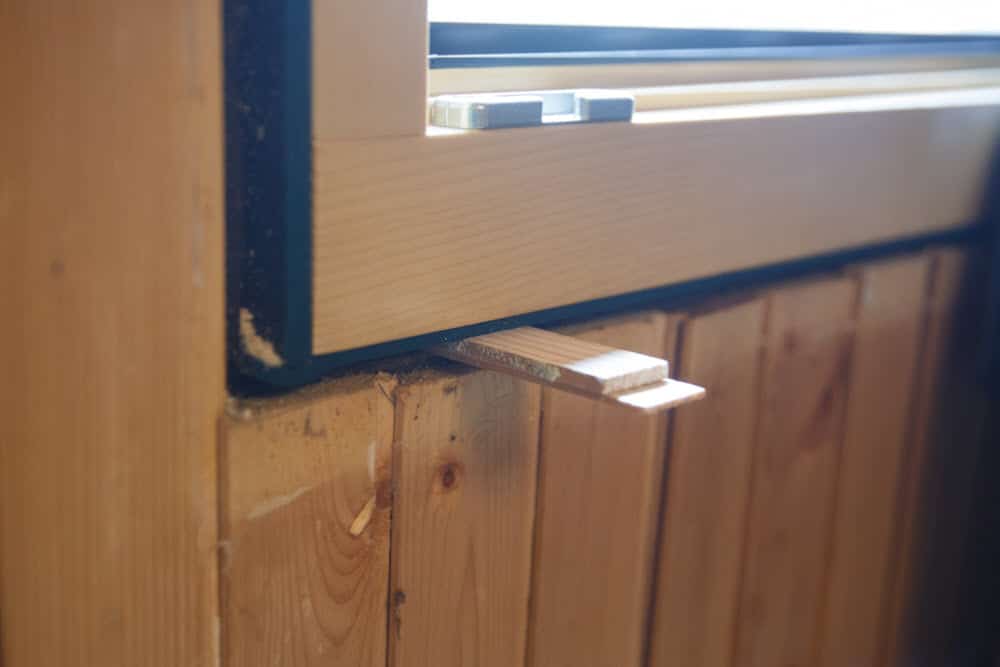Is Window Replacement a DIY Project
Are you considering replacing your windows? It’s a home improvement project that can enhance the appearance, energy efficiency, and value of your home. But before you dive into DIY window replacement, it’s important to assess whether it’s a feasible undertaking for you. In this article, we will explore the question: Is window replacement a DIY project?
Many homeowners opt for DIY projects to save money and take pride in completing tasks themselves. However, when it comes to window replacement, it’s crucial to consider the complexity of the job and the level of expertise required. Let’s dive into the discussion of DIY window replacement versus hiring a professional.
Assessing Your Skills and Resources.
Before you embark on a DIY window replacement project, it’s essential to evaluate your skills and resources. Properly assessing your abilities, tools, and knowledge will help determine if you are equipped to handle the task at hand. Follow this window replacement guide and consider the following tips as you gauge your readiness for DIY window installation:
- Evaluate your experience: Consider if you have any prior experience with home improvement projects, particularly those involving windows. Have you successfully completed similar tasks in the past? Assessing your past accomplishments will give you an idea of what you can expect during a window replacement project.
- Assess your comfort level: Reflect on your comfort level with DIY projects. Window replacement requires physical work, accurate measurements, and attention to detail. Be honest with yourself about your comfort level in handling these tasks, as it impacts the overall success and quality of the installation.
- Consider your available time: DIY window replacement can be time-consuming, especially if you are new to the process. Assess how much time you can dedicate to the project and ensure it aligns with your schedule and commitments.
- Take stock of your tools: Evaluate your existing toolset and determine if you have the necessary tools for window replacement. Some essential tools include a measuring tape, pry bar, utility knife, caulk gun, hammer, screwdriver set, and a cordless drill.
- Research and educate yourself: Invest time in educating yourself about the window replacement process. Read instructional guides, watch videos, and consult reliable sources to familiarize yourself with the steps involved.
Pros and Cons of DIY Window Replacement.
DIY window replacement can be an attractive option for homeowners looking to save money and take control of their home improvement projects. However, it’s important to consider the pros and cons before deciding whether to embark on this endeavor yourself.
Pros of DIY Window Replacement
- Cost savings: One of the main advantages of DIY window replacement is the potential for significant cost savings. By eliminating labor costs associated with hiring a professional, you can allocate your budget toward higher-quality windows or other home improvement projects.
- Sense of accomplishment: Completing a window replacement project on your own can provide a great sense of achievement. It allows you to showcase your skills and take ownership of the transformation, enhancing your pride in your home.
- Control over the process: DIY window replacement gives you full control over the entire process, from choosing the materials and design to setting your own timeline. You have the freedom to make decisions that align with your preferences and priorities.
- Flexibility: When tackling the project yourself, you can work at your own pace and fit it into your schedule. This flexibility can be particularly beneficial if you have other commitments or prefer to complete the project in stages.
Cons of DIY Window Replacement
- Lack of expertise: Window replacement requires specific knowledge and skills to ensure proper installation. Without the expertise of a professional, you may encounter challenges or make mistakes that could impact the functionality and efficiency of the windows.
- Potential for costly mistakes: Inaccurate measurements, improper sealing, or faulty installation techniques can result in costly mistakes. Fixing these errors might require additional time, effort, and resources, further increasing the overall expenses.
- Safety concerns: Working with glass and tools can pose safety risks, especially if you’re unfamiliar with proper safety protocols. Without the guidance of a professional, you’ll need to take extra precautions to ensure your safety throughout the process.
- Time and effort: DIY window replacement can be time-consuming and physically demanding. You’ll need to invest significant time and effort into research, preparation, and execution, which may not be feasible for everyone.
Best Techniques for DIY Window Replacement.
If you’ve decided to take on the challenge of DIY window replacement, it’s crucial to follow the best techniques to ensure a successful outcome. By using the right methods, you can achieve professional-looking results and save money in the process. Here are some step-by-step instructions, tips, and tricks to help you along the way:
Gather the Necessary Tools and Materials
- Measure tape
- Hammer
- Screwdriver
- Putty knife
- Caulking gun
- Window installation screws
- Weatherstripping
Remove the Old Window
- Start by removing the interior window trim with a putty knife or pry bar.
- Next, use a screwdriver to unscrew the window sash from the frame.
- Carefully remove any remaining screws or nails holding the window in place.
- Gently pry the window frame away from the opening.
- Dispose of the old window properly.
Prepare for Installation
- Clean the window opening thoroughly and remove any debris.
- Apply weatherstripping around the perimeter of the window opening to minimize drafts.
- Measure the opening and ensure it is square and level.
Install the New Window
- Place the new window in the opening and align it properly.
- Secure the window in place using installation screws and a screwdriver.
- Check for proper operation by opening and closing the window.
Add Finishing Touches
- Apply caulk around the exterior of the window to seal any gaps.
- Install interior trim and moldings to enhance the aesthetic appeal.
- Clean the window thoroughly, both inside and outside.
By following these best techniques, you can confidently tackle your DIY window replacement project and enjoy the rewards of a job well done. Remember to take your time and pay attention to detail, ensuring a beautiful and functional finished result.
Conclusion
In conclusion, when considering whether to embark on a DIY window replacement project, it is essential to assess your own skills, resources, and confidence. While it can be a cost-saving and rewarding endeavor, it is crucial to weigh the pros and cons.
It is important to recognize the complexity of the task. If you are unsure or lack experience, it is recommended to hire a professional window replacement contractor. They possess the expertise and knowledge to ensure a seamless and efficient installation, reducing the risk of costly mistakes or safety hazards.
Remember, regardless of whether you choose to go the DIY route or hire a professional, carefully assess your abilities, follow the best techniques, and prioritize safety throughout the entire window replacement process.
Is Window Replacement a DIY Project FAQs
Is window replacement a DIY project?
Window replacement can be a DIY project if you have the necessary skills, tools, and knowledge. However, it’s important to carefully assess your abilities and consider the complexity of the task before taking it on yourself.
What are the benefits of DIY window replacement?
DIY window replacement can potentially save you money, give you a sense of accomplishment, and provide greater control over the process. It allows you to work at your own pace and make decisions without relying on a professional.
What are the challenges of DIY window replacement?
DIY window replacement requires specific skills and tools. Without prior experience, there is a risk of making costly mistakes, compromising the structural integrity of your home, or voiding any warranties. It is also a time-consuming and physically demanding project.
How do I assess my skills and resources for DIY window installation?
To assess your skills and resources for DIY window installation, consider your experience with home improvement projects, ability to accurately measure and cut materials, access to necessary tools, and familiarity with local building codes. It may be helpful to consult online guides and tutorials to get a better understanding of the process.
What are the best techniques for DIY window replacement?
The best techniques for DIY window replacement include accurately measuring the opening, properly removing the old window, ensuring proper insulation and weather sealing, and correctly installing and finishing the new window. Following manufacturer instructions and using quality materials is essential for a successful installation.
Should I hire a professional for window replacement?
If you’re unsure about your abilities or lack experience in window replacement, it is advisable to hire a professional. A professional window replacement contractor can ensure a seamless and efficient installation, provide expert advice, and offer warranties on their work. They have the necessary skills, tools, and expertise to tackle the job.
How much does professional window replacement cost?
The cost of professional window replacement depends on various factors such as the number of windows, the size and type of windows, local labor rates, and any additional services required. It’s best to obtain quotes from multiple contractors to get an accurate idea of the cost.
What are the potential risks of DIY window replacement?
The potential risks of DIY window replacement include improper installation leading to drafts, leaks, or structural issues. Additionally, personal safety risks arise from working at heights, using power tools, and handling glass. Finally, mistakes during installation can result in the need for costly repairs or re-installation.



